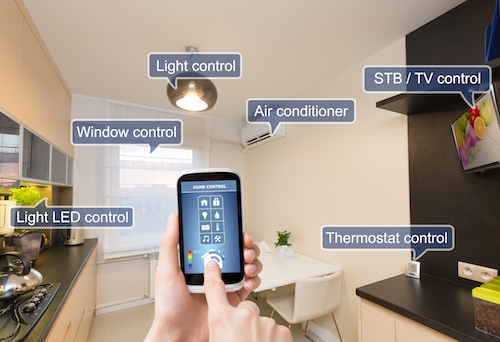The Modernization of IoT Networks
By: Dave Kjendal

In recent years, we’ve seen a combination of technologies converge to become the foundation of change across the network landscape. Cloud computing has become more dynamic in its capabilities, creating new opportunities for application and service creation and delivery. Virtualization, microservices and adaptive security models have also become key elements of modern network design as the digitization and connectedness of our world moves forward at a rapid pace.
These cornerstone technologies have also been driving factors behind the growth of the Internet of Things (IoT). As we move toward a world in which everything is connected, it is no surprise that the legacy networks designed primarily for high-bandwidth applications have proven to be sub-optimal in price and performance for many of the emerging machine-to-machine (M2M) applications that need to send and receive small amounts of data while consuming almost no power. The changing architecture of these networks has also meant a change in the way they need to be managed. With dynamic performance management and application optimization becoming increasingly important, network management is being reinvented and is motivating a range of companies to offer new protocols, pricing structures and customer engagement models suited to low bandwidth M2M Internet of Things (IoT) communication.
Next Generation OSS/BSS Platforms: Built for IoT
A key component of network connectivity and management—often transparent to end users—are the Operational Support System (OSS) and Business Support System (BSS) platforms. Focused on the network and services, an OSS is typically used by network planners, service designers and engineering teams. It orchestrates and automates the 'back-office' network management functions. Business Support Systems comprise a separate set of applications supporting commercial, revenue and customer-relationship activities. Combined, OSS and BSS deliver the full set of capabilities a service provider needs to operate a network and sell services.
Being able to securely connect, activate and monitor IoT devices at massive scale, in a multi-tenant and multi-vendor environment—and across a broad range of applications—is the new standard for network operators. Network providers need to be able to manage the OSS/BSS features of the network server, packet core, data streaming, security, performance of the Radio Access Network (RAN) and End Device adaptive data rates (RF tuning). In addition, the IoT application management environment provided by the network operator must efficiently enable gateway deployment and provide scalable, secure, end-device onboarding, application service provisioning and visualization tools.
While some operators struggle to transform their monolithic legacy systems to support these requirements, many are gaining a competitive advantage by opting to have their network managed by a network services provider with an OSS/BSS built for IoT. At a time when the landscape is so rapidly changing— when IoT applications are being envisioned and built daily—what should operators consider?
Open Standards-Based Technology: The OSS/BSS must combine innovative and open standards-based technologies, enabling the IoT Application Provider to leverage the operational experience of the network provider. This partnership between the network provider and IoT application provider mitigates much of the risk often associated with the adoption of new technologies.
Built for the Scale of IoT: The OSS/BSS offering must be secure, cost effective and scalable, providing operational efficiencies that scale to support billions of connected devices. It must also support technology that enables the highest levels of network reliability, service level excellence and be backed by a responsive support organization, ensuring the IoT provider’s service offering is predictable and reliable wherever it is being offered.
Built for Market Expansion: The capabilities and services should provide IoT Application Providers with the ability to rapidly and economically move from concept to pilot and massive scale commercial deployments. The network offering must be capable of providing rapid ‘time to coverage,’ meeting the Application Provider’s goals for expansion beyond its traditional areas of service.
As-a-Service Cost Efficiencies: An OSS/BSS designed with the optimal set of functionalities for operating a LPWA network will always have a significant cost advantage derived through a scalable cloud deployed “as a service” product offering.



















